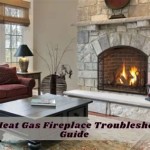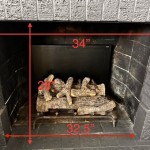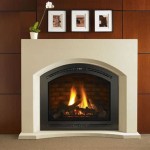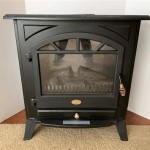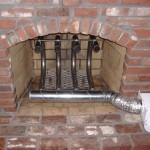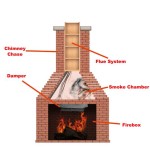Small Fireplace Wood Burning Stove: A Comprehensive Guide
Small fireplace wood burning stoves have emerged as a significant heating option for homeowners seeking efficiency, aesthetics, and a connection to traditional heating methods. These compact appliances provide a concentrated heat source, often supplementing or even replacing central heating systems in smaller spaces or specific rooms. The selection and installation of a small wood burning stove requires careful consideration of various factors, including heating needs, space limitations, safety regulations, and environmental impact.
Key Considerations Before Purchase
Prior to committing to a small wood burning stove, a thorough assessment of individual requirements is crucial. This involves evaluating the size of the area to be heated, insulation levels, local building codes, and the availability of suitable wood fuel.
The heating capacity of a wood burning stove is typically measured in British Thermal Units (BTUs). A proper BTU rating ensures that the stove is capable of adequately heating the intended space without being excessively powerful or insufficient. Overly powerful stoves can lead to overheating and discomfort, while underpowered stoves may struggle to maintain a comfortable temperature during colder periods. Factors such as room size, ceiling height, window surface area, and wall insulation influence the required BTU output. Online BTU calculators and professional consultations can assist in determining the appropriate heating capacity.
Space constraints play a crucial role in selecting a small wood burning stove. The stove must fit comfortably within the designated area, allowing sufficient clearance from combustible materials such as walls, furniture, and curtains. Manufacturers provide detailed specifications regarding minimum clearance requirements, which must be strictly adhered to for safety purposes. Smaller stoves are designed to maximize heat output while minimizing their footprint, making them suitable for apartments, cabins, or smaller living rooms. The flue or chimney, which carries exhaust gases away from the stove, also requires careful planning. Existing chimneys may need to be inspected and potentially relined to ensure proper draft and safety. If an existing chimney is not available, a new one must be installed according to local building codes.
Local building codes and regulations govern the installation and operation of wood burning stoves. These codes address aspects such as chimney height, flue liner material, hearth protection, and ventilation requirements. Obtaining the necessary permits is essential before installation to ensure compliance and avoid potential fines or safety hazards. Furthermore, insurance companies may require proof of compliance with building codes before providing coverage for homes with wood burning stoves.
The availability and cost of wood fuel are important considerations. Wood burning stoves are most efficient when fueled with seasoned, dry wood. Green or wet wood produces more smoke and creosote, which can increase the risk of chimney fires and reduce the stove's efficiency. Sourcing wood from sustainable sources helps to minimize the environmental impact associated with wood burning. The cost of wood can vary depending on location and availability. It may be more economical to purchase wood in bulk during the off-season.
Features and Types of Small Wood Burning Stoves
Small wood burning stoves are available in various designs and configurations, each offering distinct features and benefits. Understanding the differences between these options is crucial for selecting the stove that best meets individual needs and preferences.
Cast iron stoves are renowned for their durability and heat retention capabilities. Cast iron effectively absorbs and radiates heat, providing a consistent and comfortable warmth. These stoves often feature intricate designs and enamel finishes, adding aesthetic appeal to the living space. However, cast iron stoves can be heavier and more expensive than other types.
Steel stoves are lighter and generally less expensive than cast iron models. Steel stoves heat up more quickly, providing a rapid burst of warmth when the fire is lit. They are also more resistant to cracking and breakage compared to cast iron. However, steel stoves may not retain heat as effectively as cast iron.
Catalytic stoves utilize a catalytic combustor to reduce emissions and improve efficiency. The combustor burns off smoke and gases that would otherwise be released into the atmosphere, resulting in cleaner burning and reduced creosote buildup. Catalytic stoves typically require regular maintenance to ensure proper combustor function.
Non-catalytic stoves rely on secondary air combustion to achieve cleaner burning. These stoves are generally simpler in design and require less maintenance than catalytic models. However, they may not be as efficient in reducing emissions.
EPA-certified stoves meet stringent emission standards set by the Environmental Protection Agency. These stoves are designed to burn wood more cleanly and efficiently, reducing air pollution and minimizing environmental impact. Most modern wood burning stoves are EPA-certified.
Some small wood burning stoves are equipped with features such as air wash systems, which help to keep the glass door clean, providing a clear view of the fire. Other features include adjustable air controls, which allow users to regulate the burn rate and heat output of the stove, and ash drawers, which simplify ash removal.
Safe Installation and Operation
Proper installation and operation are paramount for ensuring the safe and efficient use of a small wood burning stove. Neglecting safety precautions can lead to serious consequences, including fire hazards, carbon monoxide poisoning, and property damage.
Professional installation is highly recommended, especially if the homeowner lacks experience with wood burning stoves or chimney systems. A qualified installer can ensure that the stove is properly connected to the chimney, that adequate clearances are maintained, and that all local building codes are met. This typically involves verifying that the hearth protection is adequate based on the stove's specifications and that the chimney flue is the appropriate diameter for the stove collar. Proper draft is essential for the stove to burn efficiently and avoid smoke spillage into the home.
Regular chimney inspections are essential for identifying and addressing potential hazards such as creosote buildup, cracks, or blockages. Creosote is a highly flammable substance that accumulates in the chimney as a byproduct of wood burning. Regular chimney sweeping removes creosote, reducing the risk of chimney fires. A certified chimney sweep can perform a thorough inspection and cleaning, ensuring the chimney is functioning safely and efficiently.
Carbon monoxide detectors should be installed in the home, particularly near sleeping areas. Carbon monoxide is a colorless, odorless gas that can be produced by incomplete combustion. Exposure to high levels of carbon monoxide can be fatal. Carbon monoxide detectors provide an early warning of potentially dangerous levels of the gas. Detectors should be tested regularly and batteries replaced as needed.
Proper wood storage is crucial for maintaining the quality of the fuel. Wood should be stored in a dry, well-ventilated area to allow it to season properly. Seasoned wood burns more efficiently and produces less smoke and creosote. Stacking wood off the ground and covering it with a tarp can help to protect it from moisture. Never store wood inside the home, as this can attract insects and increase the risk of fire.
Safe burning practices involve using the stove according to the manufacturer's instructions. Overfiring the stove can damage its components and increase the risk of fire. Avoid burning trash, plastics, or other materials that can produce toxic fumes or contribute to creosote buildup. When starting a fire, use kindling and small pieces of wood to establish a good draft before adding larger logs. Never leave a fire unattended.
Ash disposal should be handled carefully. Allow ashes to cool completely before removing them from the stove. Place the ashes in a metal container with a tight-fitting lid. Store the container outdoors, away from combustible materials, until the ashes can be safely disposed of. Some communities offer ash recycling programs.

Vogue Small Wood Burning Stoves Stovax Contemporary

The Hobbit Stove Eco Design Approved Salamander Stoves

Can You Install A Wood Stove In Fireplace Direct Stoves

Small Stoves For Household Fireplaces Archives Salamander

Small Wood Burning Stoves Bonfire Fireplaces

Vogue Small Wood Burning Stoves Stovax Contemporary

Small Tiny Wood Stoves By Salamander Apple Pie Saltfire And Ekol

9 Exceptional Multi Fuel Wood Burning Stoves For Small Spaces Direct

6 Spectacular Small Log Burners With Remarkable Character Stovax Gazco

Best Wood Fireplaces For Small Spaces
Related Posts

